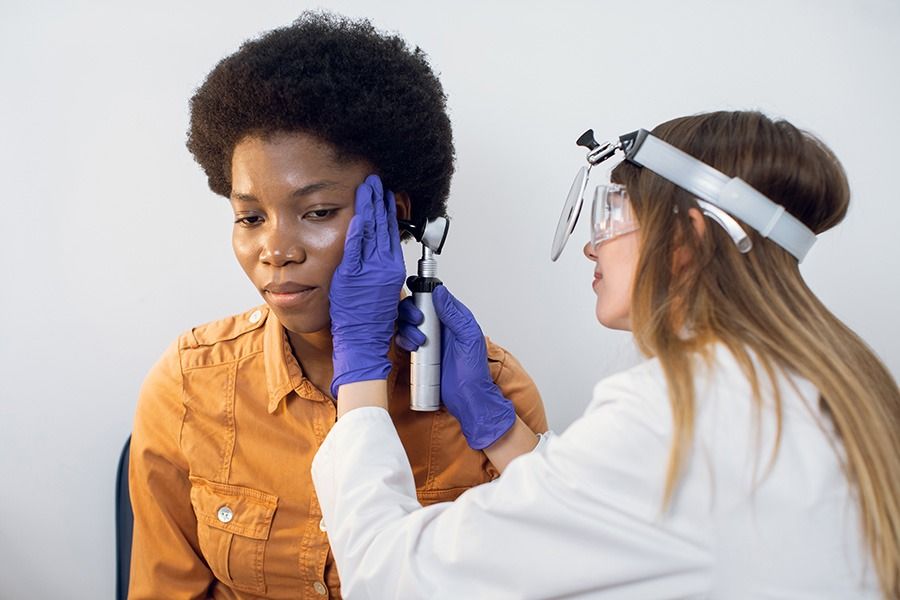Introduction
Sensorineural hearing loss (SNHL), a predominant form of hearing impairment, greatly impacts the lives of many adults worldwide. The condition arises primarily due to damage to the inner ear or auditory nerve. Advances in science and technology are progressively shaping the narrative around SNHL, driving better understanding, treatment options, and preventative measures. This article ventures into the exciting world of cutting-edge research and technological advancements that are redefining our approach to SNHL.
We’ll take a deep dive into gene therapy, showcasing its potential in treating SNHL where conventional approaches fall short. We’ll also shine a light on ongoing clinical trials and their promising developments for this demanding condition. Furthermore, we will review cochlear implants, an established solution for SNHL that continues to evolve with research. Adding a nutritional perspective to our discussion, we’ll look into the role antioxidants play in preventing SNHL. Lastly, we will explore the exciting intersection of nanotechnology and SNHL, an emerging area that promises both intrigue and hope.
Each of these areas offers a glimpse into the future of SNHL treatment and prevention, providing adults suffering from this condition with a new sense of optimism. Join us as we explore the innovative frontiers of sensorineural hearing loss that are transforming the field of audiology.
OTC Hearing Aid Pair
Experience the world like never before with the RCA OTC Behind-the-Ear Hearing Aid. Our advanced digital technology ensures that every sound is crystal clear and vibrant, allowing you to fully immerse yourself in life’s experiences. Whether it’s the laughter of loved ones or the music that moves you, our hearing aid brings back the joy of every moment.
Say goodbye to the hassle of appointments and prescriptions. The RCA OTC Hearing Aid is designed to meet the needs of individuals without the need for a prescription. With its seamless setup and user-friendly design, you can effortlessly enhance your hearing abilities and stay connected to the world around you. Simply unpack, wear, and enjoy improved auditory perception instantly.
Experience optimal comfort and style with our discreet behind-the-ear design. The thin tube design allows you to wear glasses comfortably, so you can enjoy clear hearing while maintaining your personal sense of style. Plus, our rechargeable battery ensures long-lasting power, eliminating the inconvenience of constantly replacing small batteries. Elevate your hearing experience with the RCA OTC Hearing Aid and embrace the world with confidence.
Gene Therapy in Treating Sensorineural Hearing Loss: Latest Discoveries
Gene therapy has been heralded for its potential to transform the treatment of sensorineural hearing loss. By addressing the defective genes that cause hearing loss, gene therapy seeks to cure the issue at its roots.
There have been promising strides in this field. For instance, a study led by Géléoc and his team demonstrated that gene therapy could restore hearing in a mouse model of human genetic deafness. Despite the considerable gap from mice to humans, the research offers a glimmer of hope that gene therapy could potentially treat certain types of SNHL.
Additionally, breakthroughs in CRISPR-Cas9 technology, a gene-editing tool, have opened new avenues in the fight against SNHL. This groundbreaking method allows for precise alterations to the genome, potentially enabling scientists to rectify mutations leading to sensorineural hearing loss. The intricate nature of the human ear and the many genes that govern hearing pose significant challenges to the translation of this approach to human trials. However, the potential benefits of this approach continue to inspire optimism in researchers and patients alike.
Current Clinical Trials: Innovations in Sensorineural Hearing Loss
A variety of clinical trials are currently underway worldwide, aiming to unearth and refine innovative treatments for sensorineural hearing loss. These trials explore a wide range of approaches, from pharmaceutical interventions to novel surgical procedures.
One such trial evaluates the effectiveness of FX-322, a drug developed to stimulate the regeneration of sensory hair cells in the inner ear. Preliminary results suggest that this drug may have the capacity to restore a degree of hearing in individuals suffering from SNHL.
Audion Therapeutics conducts another similar trial, employing a drug named LY3056480. This drug also targets the regeneration of sensory hair cells in the inner ear, offering a fresh approach to treating SNHL. Initial results demonstrate promise, though additional testing is needed to confirm safety and effectiveness.
Such trials epitomize the relentless pursuit of novel treatments for sensorineural hearing loss. Each successful trial represents another step closer to discovering more effective solutions for those affected by this complex condition.
Deafness: A Journey of Challenges and Triumphs
Advancements in Cochlear Implants: An Evolving Field
Cochlear implants have been a mainstay solution for those grappling with severe to profound sensorineural hearing loss. These transformative devices bypass the compromised inner ear and deliver electrical signals straight to the auditory nerve. The pursuit of enhancement in this field is ceaseless, with ongoing research promising to ameliorate the performance and user experience of these life-altering devices.
Among these advancements, the development of entirely implantable cochlear implants stands out. Contrary to traditional implants that necessitate an external sound processor, these fully implantable devices are entirely concealed under the skin. This brings not only aesthetic advantages but also eliminates many of the daily challenges associated with external components.
Additionally, researchers are striving to augment the sound quality and speech comprehension offered by these implants. For instance, endeavors to devise new processing strategies are focused on increasing the clarity and naturalness of sound produced by these implants. This includes algorithms that better mimic the function of the healthy inner ear and can enhance performance in noisy conditions.
Cochlear implants might not be a panacea for sensorineural hearing loss, but these advancements significantly improve the quality of life for those who depend on them. As research progresses, the future of cochlear implants appears brighter than ever.
Tinnitus: why it’s still such a mystery to science
The Role of Antioxidants in Preventing Sensorineural Hearing Loss
The potential influence of antioxidants in preventing sensorineural hearing loss is gaining traction among researchers. This perspective posits that antioxidants, by counteracting harmful free radicals in the body, might protect the delicate inner ear structures from damage.
Several studies have drawn a correlation between a higher intake of antioxidants and lower incidences of hearing loss. One study, published in the Journal of Nutritional Biochemistry, suggested that regular consumption of antioxidants such as vitamin C, vitamin E, and beta-carotene was linked to a decreased risk of SNHL.
Nevertheless, it’s critical to understand that antioxidants may play a role in preventing hearing loss, but they are not a foolproof solution. Sensorineural hearing loss can result from an array of factors, including genetic predispositions and exposure to loud noise, which cannot be mitigated by antioxidants alone.
Nanotechnology and Sensorineural Hearing Loss: An Emerging Field of Study
Nanotechnology, the science of manipulating matter on atomic and molecular scales, is a burgeoning field with potential applications in treating sensorineural hearing loss.
One compelling area of research is the use of nanoparticles for drug delivery to the inner ear. This methodology could potentially overcome one of the most significant hurdles in treating SNHL: delivering drugs past the body’s natural defenses to the inner ear where they can effect change.
Another promising area of research is the use of nanofibers to enhance cochlear implants. By creating an implant electrode that is thinner and more flexible, nanofibers could minimize damage to the delicate structures of the inner ear during implantation.
While nanotechnology’s role in treating sensorineural hearing loss is still nascent, the potential it presents is exhilarating. With ongoing research and development, nanotechnology may play a critical role in the future of SNHL treatment.
Conclusion
The path to understanding and treating sensorineural hearing loss has been intricate and challenging, yet it brims with optimism and hope. From promising progress in gene therapy and the potential of CRISPR-Cas9 technology to intriguing research surrounding antioxidants, our comprehension of SNHL continues to evolve.
Clinical trials globally are making innovative strides, exploring drugs like FX-322 and LY3056480, which may stimulate sensory hair cell growth and potentially transform the SNHL treatment landscape. The continuous advancements in cochlear implants, particularly the advent of fully implantable devices, are improving the quality of life for many patients, rendering this technology more accessible and convenient than ever.
The convergence of nanotechnology and SNHL offers exciting prospects, like nanoparticles for targeted drug delivery and nanofibers for enhanced cochlear implants. As research perseveres, we may witness a transition from simply managing SNHL to potentially reversing or even preventing it.
While the journey is far from complete, these developments shine a light of hope for the countless adults worldwide who are affected by sensorineural hearing loss. Through the collaborative efforts of scientists, clinicians, and patients, the future of SNHL treatment looks promising, characterized by innovation, empathy, and an unwavering dedication to improving the quality of life for those impacted by this condition.

Thriving with Conductive Hearing Loss: A Guide to Hobbies, Fitness, Socialization, and Relationships
This guide offers strategies for seniors caring for someone with conductive hearing loss, focusing on hobbies, fitness, social events, dating, and music.

Navigating the Sound of Silence: Insights into Living with Conductive Hearing Loss
An in-depth look into the lives of seniors with conductive hearing loss, exploring their challenges and the strategies they use to lead fulfilling live








